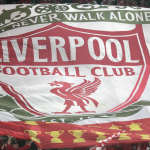
DURING his short tenure, Mikel Arteta’s ideas have quickly concreted. The team’s performances are still very hit and miss, in truth, with the manager himself acknowledging that they are at the very beginning of a long process of overhaul. His system, however, and how it operates is easy to follow.
This is especially true in attack, where Arsenal fill up what coaches sometimes refer to as ‘the five attacking lanes.’ Nicolas Pepe (or Reiss Nelson) holds the width of the pitch on the right hand side. Mesut Ozil generally stands immediately to his left, though there is often interchange between the two.
On the left, it is full-back Bukayo Saka (or Sead Kolasinac) who stretches the pitch, playing virtually as a winger. Pierre Emerick Aubameyang (or Gabriel Martinelli) then operates as an inside left, exploiting the half-spaces and running into premium attacking positions. Under Arteta, the central pin of this five-man attacking unit has always been either Alexandre Lacazette or Eddie Nketiah.
Despite his goalscoring exploits from the centre-forward position in the early rounds of the Carabao Cup and the Europa League group stage, Arteta hasn’t used Martinelli in the central role yet. Aubameyang has also not been tried as a central striker by the coach and – given his elite goalscoring record – that is surprising on the surface.
For the City game we have to go with our BEST lineup. None of this LW Aubameyang. Put Aubameyang as the main striker, City will be terrified. Also start Martinelli in the left. He's at his best there and can get at players such as Walker. Saka and Martinelli could do some damage
— Arsenal (@ArsenalSportZ) March 8, 2020
Lacazette’s form has, shall we say, fluctuated this season. Nketiah has pleasantly surprised everyone, himself included I am sure, with the prominence he has been afforded since terminating a loan spell at Leeds. Nketiah is promising but still has some rough edges to sand off before he can be considered a genuinely top-class option in the Premier League.
Aubameyang and Martinelli can consider not being played in the central role as a compliment. The central role is to act as a hard-running, defender baiting foil. The central pin is asked to move away from the frontline and knit moves together and formulate the initial press when the opposition has the ball.
The inside-left position has greater freedom to probe for space off the ball. Auba and Martinelli are low-touch players who look to find nooks and crannies in the penalty area. Aubameyang’s recent spate of back-post headers against Newcastle and Everton were a consequence of him moving in from the left-wing undetected.
The inside-left position is not a totally free one, of course. Aubameyang probably spends more time protecting the left-back than he would like and more time engaging with the opposition right-back than is ideal. It is difficult to field Martinelli and Aubameyang together due to their similarities and their lack of interest in helping to build the play.
Playing Aubameyang as a wide-forward is also a symptom of Arsenal’s lack of elite options in this area. The midfield contributes very little to the goalscoring effort, so putting Aubameyang in a wider role allows Arteta to squeeze another decent goalscorer into the team in the shape of Nketiah or Lacazette.
But are we overthinking this, perhaps? Is there a way that Aubameyang could play this less glamorous central role with Martinelli inside him? The Brazilian isn’t the most technically accomplished player, but he has formed an excellent partnership with Bukayo Saka already. The question is, to what extent has the donkey work of the centre-forward allowed that Martinelli / Saka axis to exist and would Aubameyang’s more low involvement take on the central role disturb it?
Goal threat from midfield is an issue. Our midfielders have just scored a COMBINED 2 goals in the league this season. Not good enough at all.
— LTArsenal™ (@ltarsenal) March 8, 2020
Auba’s goal output is not unduly harmed by playing slightly wider, even if he is a fairly average dribbler and crosser. I think he would score the same amount of goals in either position. As a centre-forward, he plays on the shoulder of the opposition defence, which means he can cut a peripheral figure for large parts of the game when played upfront.
Given Arsenal’s lack of a disruptive thrust from midfield, there is a risk that Auba becomes lost among a throng of bodies. He would still score goals, of that there is no doubt. The question for Arteta is whether the team would score more goals with Aubameyang played more centrally. A domino effect would be required for it to work, I think.
The mode of the attack would need to be changed so that there is a focus on feeding Auba in central positions. This is not impossible, of course. One of the drawbacks of Arteta’s attack is that Pepe is asked to play very wide to balance Aubameyang’s need to move in-field and it’s just not a role that suits the Ivorian.
Aubameyang playing centrally might free Pepe up to become a kind of inside-right. Mikel Arteta and Bukayo Saka both remain adamant that Saka is not a full-back, he could potentially move to the left-flank, with the right-back (Bellerin or Soares) asked to fill the right attacking extremity, which would change the emphasis of the attack from the left to the right.
All possible, but potentially complicated at a time when Arteta, who arrived during the hectic seasonal schedule, will be keen to settle his team down. At this stage, he doesn’t even know if Aubameyang will be at the club next season, so the tactical jiggery-pokery required to flip the attack on its head might not be worthwhile in the long-term anyway.



